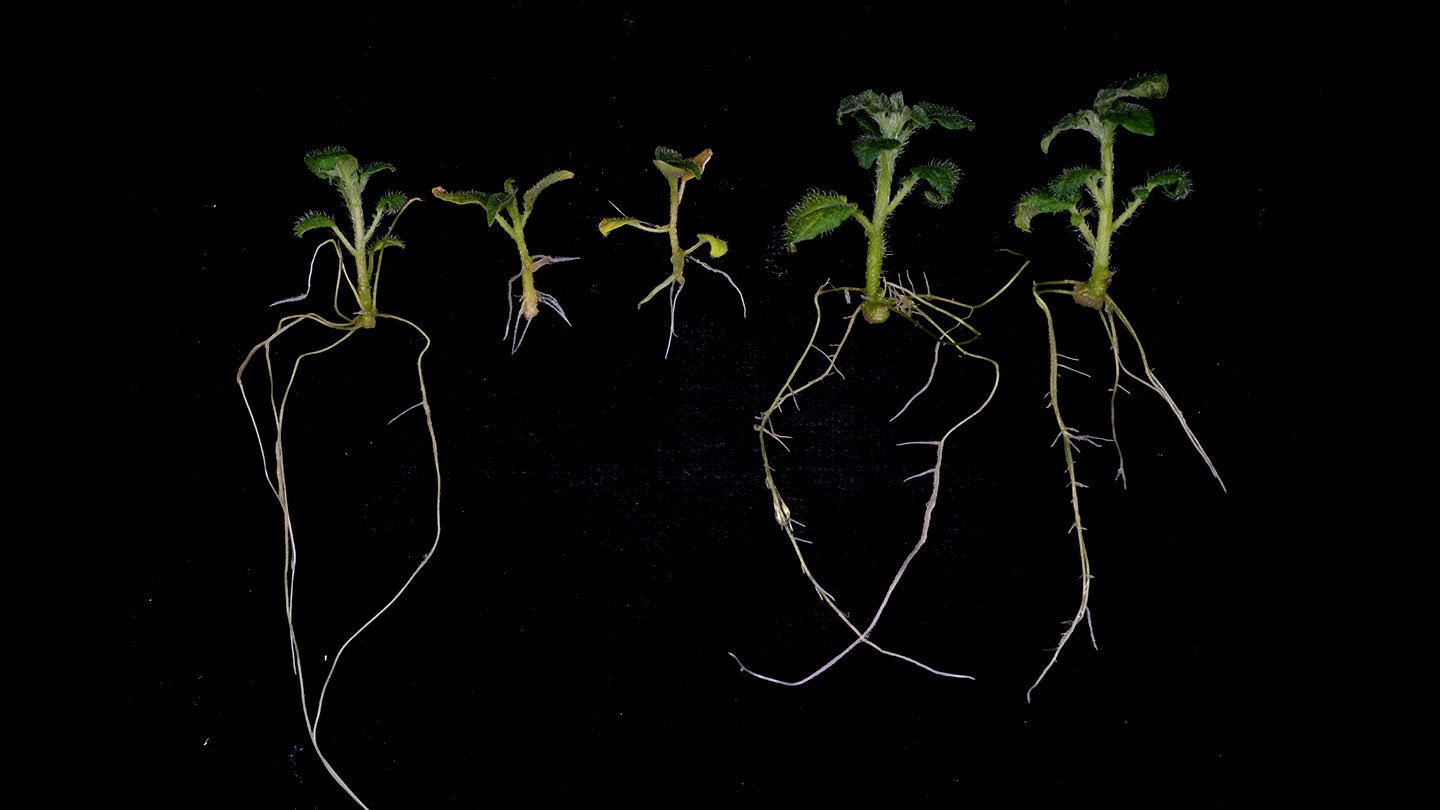
Potatoes are the third-most consumed food worldwide and a delicious snack. But modern farm potatoes require large amounts of nitrogen in the form of nitrate fertilizers, which are costly and can be environmentally harmful.
A group of researchers has found that the same genetic mechanism that tells potatoes when to grow flowers and tubers (the edible part) is also a key player in the plant’s nitrogen management. The findings, described November 6 in New Phytologist, could lead to the development of potato varieties that require less fertilizer, saving farmers money and reducing the environmental footprint of potato cultivation.
Potatoes, native to the Andes, originally grew tubers only during winter as a way to store nutrients, taking cues from the shortening of the days. The plants therefore faced a significant challenge when introduced to Europe in the 16th century. Shorter winter days came along with freezing temperatures that killed the plants before they could grow large potatoes.
Eventually, a natural genetic mutation in the gene StCDF1, which controls tuber growth, helped the potato plants adapt to grow tubers any time and much farther north. The plants no longer needed seasonal cues.
Researchers studying StCDF1 to understand how it regulates the plant’s response to the daylight cycle found that it works like a switch, activating certain genes while turning others off. But they were surprised to find that it can switch on and off genes essential for nitrogen uptake, says Maroof Ahmed Shaikh, a plant molecular biologist at the Centre for Research in Agricultural Genomics in Barcelona. Crucially, StCDF1 shuts off the production of an enzyme called nitrate reductase, which breaks down nitrate molecules so they can be used by the plant.
This discovery reveals that the genetic tweak that allowed potatoes to become a global staple food also made the plants more fertilizer-hungry.
To test if tweaking this gene would affect nitrogen uptake, the researchers grew potato plants with a disabled StCDF1 gene in a low-nitrogen environment — about 400 times less than typical soil — and studied how they fared compared with normal potato plants. The StCDF1-deficient plants could not grow tubers, but they produced bigger leaves and longer roots despite the lack of nitrogen. “They looked happy,” says Shaikh.
The Andean varieties probably had a less active StCDF1 gene and could grow better with less nitrogen, the team explains.
However, it’s the more active form of StCDF1 that’s present in all the commercial potato varieties grown worldwide. The trade-off: The staple crop is bad at assimilating nitrogen, says plant biologist Salomé Prat, also of the Centre for Research in Agricultural Genomics. “This is a problem,” because it leads farmers to use more fertilizer than the plant can absorb, Prat says. “When it rains, this excess fertilizer goes to groundwaters, polluting them.”
The finding opens the door to developing potato varieties with increased nitrogen efficiency. The researchers are planning to use gene-editing techniques to tweak the gene that produces the nitrate reductase enzyme, so it’s not repressed by StCDF1. The team has conducted experiments showing that this is theoretically possible. This same goal could be achieved using traditional breeding, crossing farm potatoes with wild or traditional varieties that naturally have altered nitrate reductase genes.
“Nitrogen uptake is one of the major obstacles in agriculture,” says Stephan Pollmann, a plant biologist at the Centro de Biotecnología y Genómica de Plantas in Madrid who wasn’t involved in the new study. Beyond being scientifically interesting, the fact that this is in potato, a real crop grown worldwide that is essential to food security, makes this finding potentially a “smasher,” Pollmann says. “If you can improve the nitrate assimilation, so the nutrition of the plant, which will in consequence give you bigger tubers, this is super important.”
Source link













Leave a Reply